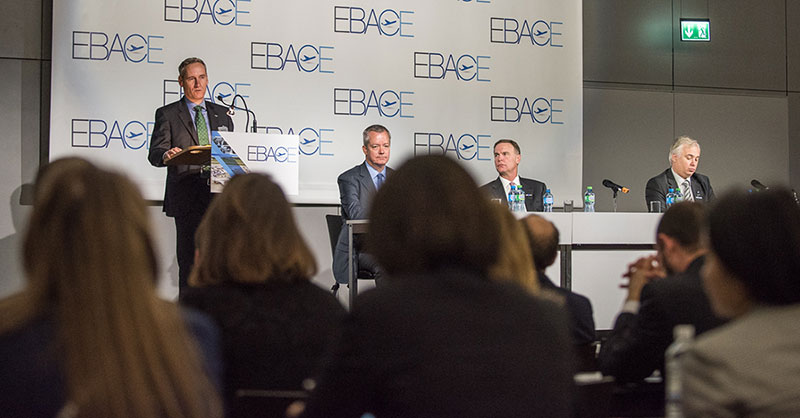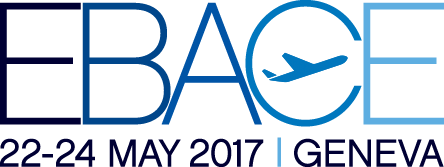Interactive EBACE2017 Safety Workshop Mines Real Accident Report for Ops Improvements

24 May 2017
Business aviation has an excellent safety record, because the industry is committed to continuous improvement. That dedication brought operators together for an annual Safety Workshop on 24 May at the European Business Aviation Convention & Exhibition (EBACE2017).
“This year’s workshop is more interactive and hands-on than ever, providing us all with strategies we can implement in our day-to-day operations,” said Juergen Wiese, chairman of the European Business Aviation Association (EBAA).
The centerpiece of the workshop was an interactive analysis of a real accident report involving a Hawker 700A operated in the United States. The National Business Aviation Association’s (NBAA’s) Doug Carr, vice president of regulatory and international affairs, presented the facts of the event, and attendees then then broke into groups to identify the root causes of the accident.
Lessons From a Preventable Accident
The Hawker was flying from Dayton to Akron, OH on Nov. 15, 2015 when it crashed 1.5 miles past Akron-Fulton International’s runway, killing all nine people aboard.
“Everything about this accident was preventable,” said Carr. “The airplane worked as it should, the air traffic system worked, the regulatory regime did what it should. Nothing failed, except the people.”
Before Carr and Razvan Prunean, EBAA’s senior manager for safety, presented the National Transportation Safety Board’s (NTSB’s) final report and findings on the accident, the breakout groups discussed the hazards and failures that led to the accident – and made safety recommendations based on those lessons.
“The captain failed to intervene when the first officer missed the final approach fix and went into a ‘dive and drive’ in an incorrect configuration,” said one group’s representative. “That probably led to the loss of control.”
“The non-flying pilot was briefing the approach [despite the company’s standard operating procedures specifying the pilot flying should conduct the briefing],” another group suggested, “and if he wasn’t understanding, he should have asked for confirmation.”
The workshop discussion was very close to the official NTSB findings from the accident, which called for a safety management system to guide hiring and training processes, strengthen the company’s safety culture and reinforce the personnel’s commitment to following standard operating procedures.
“Would any of these NTSB recommendations change what you do in your company?” Carr asked the workshop crowd. “Are there opportunities for improvement? Hopefully you all have accident response procedures. Hopefully they never get used.”
Safety Review of Key Risk Factors
The remainder of the workshop was focused on a safety review of risk factors identified by the 2015 Hawker accident. Representatives from Eurocontrol, the FAA, the International Business Aviation Council and other organizations presented the latest findings and best practices on variety of safety issues.
The workshop also presented in-depth information on:
- Wake turbulence
- Weather hazards
- Ground safety
- Data link
- Fitness for Duty
- Safety culture vs. the illusion of safety

